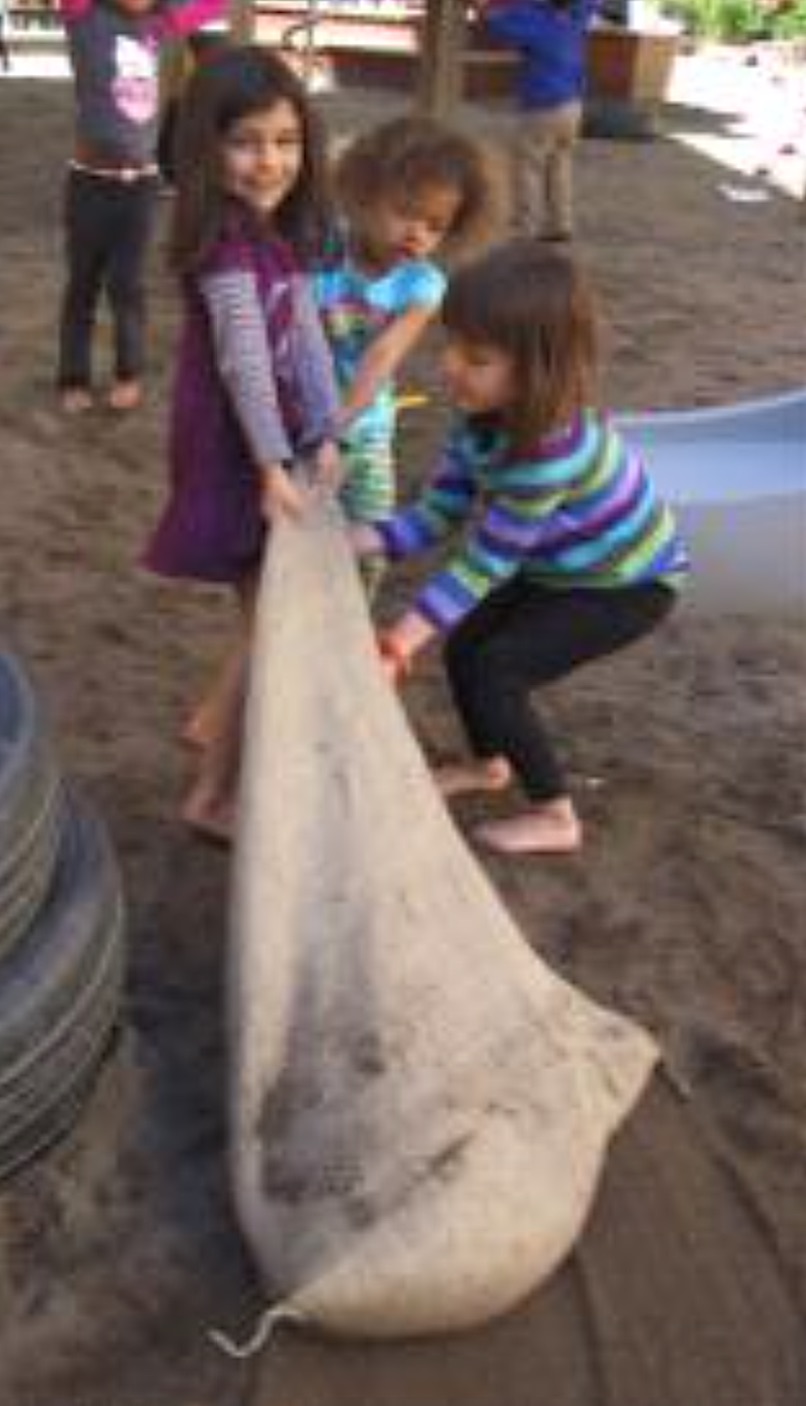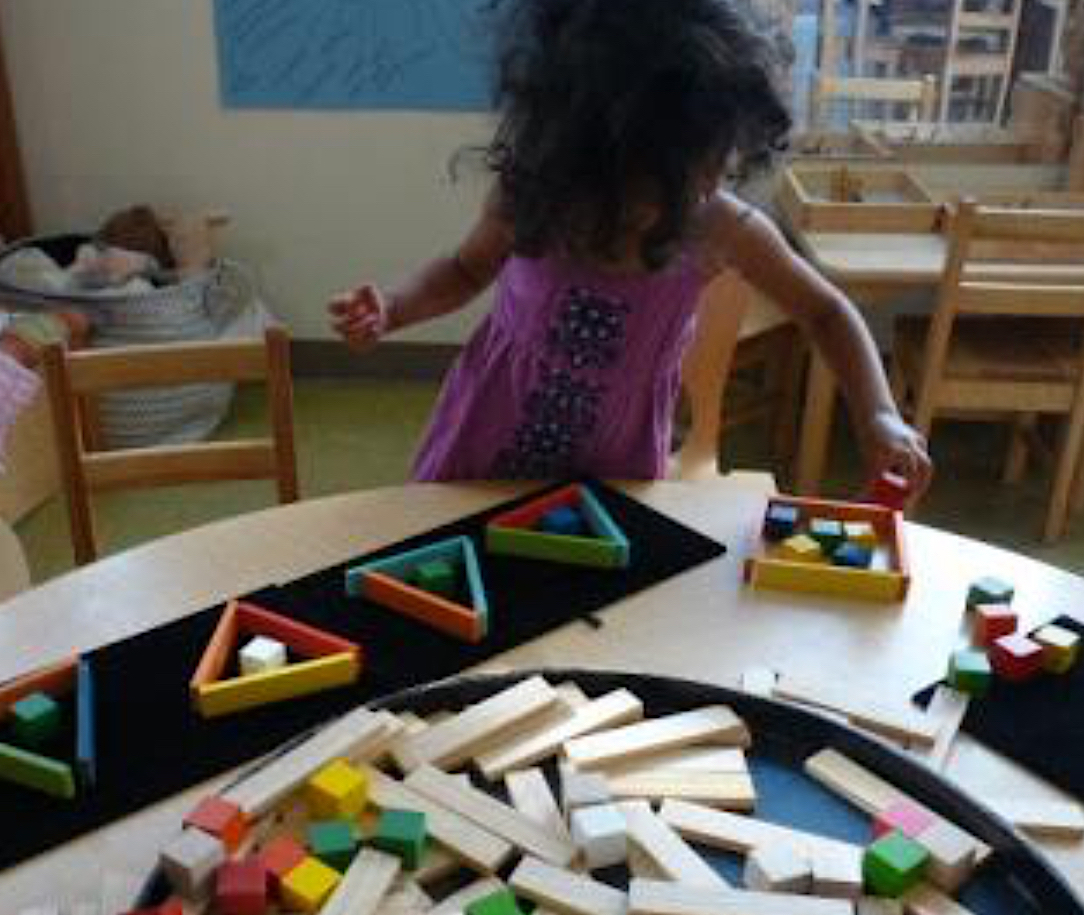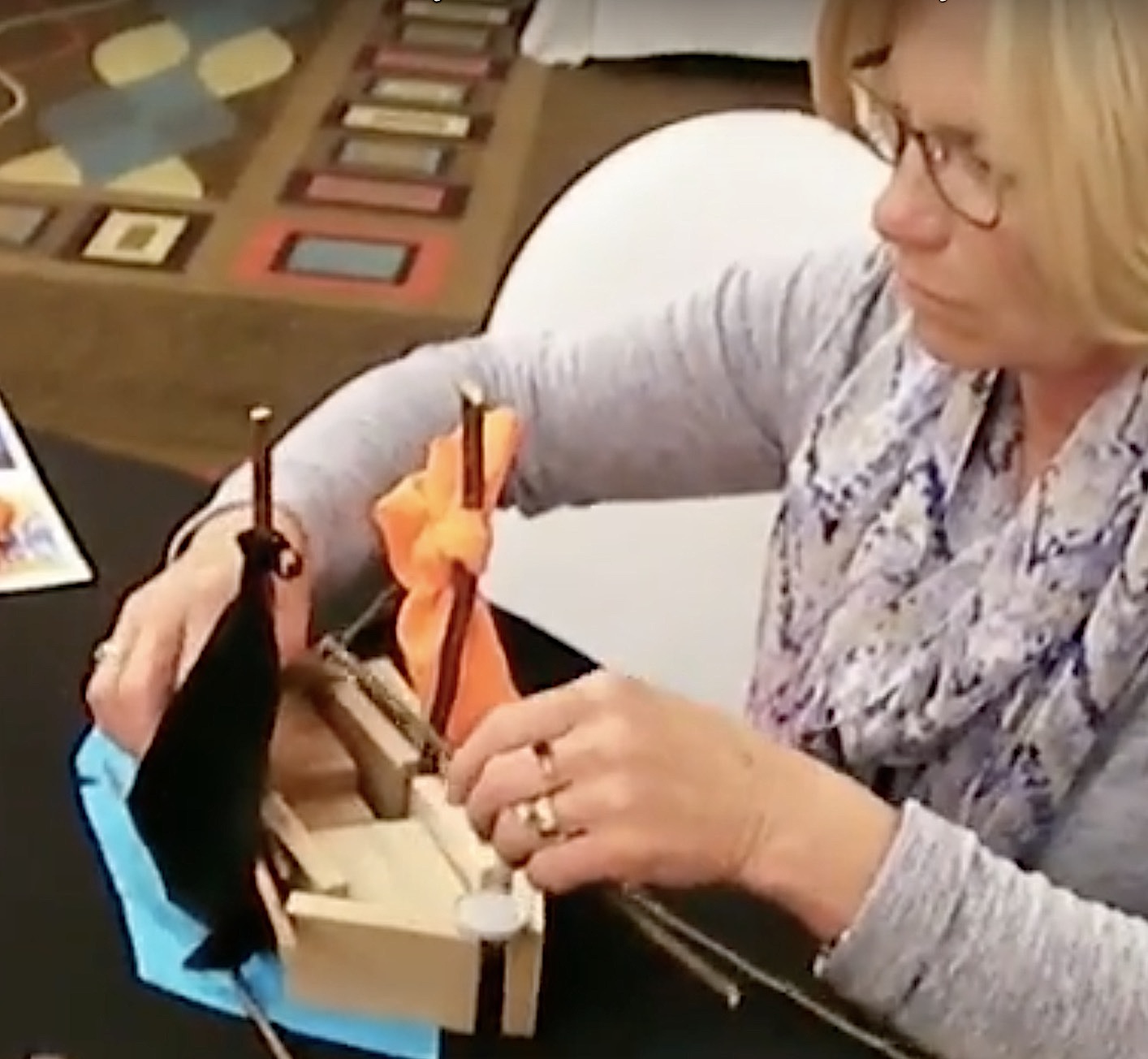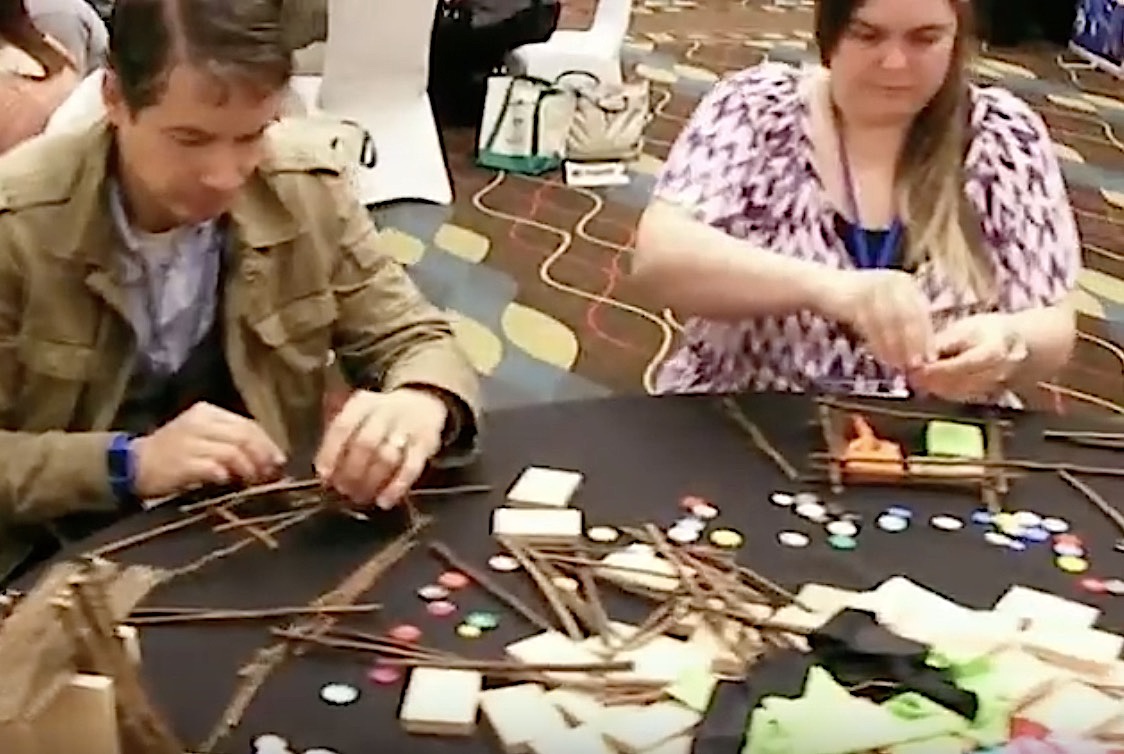Early Childhood / Preschool Blog
Play—outdoor, in-door recess, and science
By Peggy Ashbrook
Posted on 2020-01-13

Children move eagerly to get their winter wear gear, stream out the door, across the street and onto the playground. This 45 minute period, the second of the day, is a time for children’s gross motor activity on a new complex playground but also when their play, unscripted by adults, erupts. While children climb and slide, become “dragons” and chase each other, whisper in spaces under the playground equipment, take turns pushing groups of children on the large “saucer” swing, and jump off the low wall, all five essential elements to play can be seen (Nell and Drew).
This playground is not a space for teacher led games. Children are intrinsically motivated and spontaneously engage in pleasurable physical and imaginative play. Teachers ask, “Are you okay with that?” if they think a child might not be enjoying being pushed on the swing so high or the rough-and-tumble play with several classmates, stating “It is my job to keep you safe,” but otherwise do not direct the play. This practice is not unique to this school or time (Davies). Teachers also check in with children who seem unengaged in play, and support children in taking risks to help them succeed in a challenge, assisting where needed. Although teacher engagement and teacher-child interactions are fewer on the playground than in the classroom, children’s play is freely chosen and imaginative. If I notice an interesting insect or phenomena I will draw children’s attention to it only when it doesn’t interrupt their play.
Play “is fundamentally important for learning 21st century skills, such as problem solving, collaboration, and creativity, which require the executive functioning skills that are critical for adult success” (AAP Yogman and all). In nature preschools, where class takes place outdoors for most of the day, opportunities for problem solving, collaboration, creativity, and communication frequently involve interacting with natural phenomena, including as part of science inquiry. There is time for both children’s self-directed play, and teacher-led discussions about natural phenomena such as weather and living organisms. Outdoor time provides first-hand experiences in full body involvement with nature, although it isn’t the environment alone that teaches the children. Hoisington writes about how a “teacher’s ability to create a classroom culture of inquiry—an environment in which students feel consistently encouraged to share their experiences, observations, and thinking—is a key factor in fueling high-quality science teaching.” Indoors the experiences are usually much smaller in scope and can be second-hand, such as reading about weather.

Indoor “recess” does not provide the same freedom to move and play but is sometimes necessary. How can the essential elements of play be supported during indoor recess? Consider using open-ended materials, often called “loose parts,” as a resource for indoor recess where children build understandings of shape, stability, texture, quantity, patterns, measurement, and design through play experiences with materials that can be played with in many ways, almost all of them “the right way.” In loose parts play, children are more free to choose how they play with materials provided by teachers (Daly and Beloglovsky), make more of their own decisions, and are more spontaneous than when making crafts or doing an art project. Supporting children’s critical thinking, collaboration, communication, and creativity promotes a smoothly running classroom during indoor recess (Hoisington).
In this video, see how teachers too become immersed in the moment, enjoying play with materials during a solo self active play experience at a professional conference (Drew).

In their discussion of schema in a webinar and their book, Children’s Lively Minds, Deb Curtis and Nadia Jaboneta shared many photos of children playing outside and inside, some using loose parts in their creative play, some in centers or teacher-planned activities, as children build understandings of abstract ideas, patterns, and concepts. The children were using schemas of Transporting, Transforming, Trajectory, Rotation and Circularity, Enclosing and Enveloping, Connecting and Disconnecting, Positioning and Ordering, and Orientation and Perspective.

Their webinar resources included a summary of schema explorations and a tool of questions for educators in observing and reflecting on schema play and brain development. I love what they say in the beginning of Chapter 1: “…we will search for many possibilities for understanding what we see unfolding with the children so we an make choices about the role we want to play in enhancing experiences for all of us.”
I want all children to have extended time in outdoor gross motor play, and outdoor nature exploration, and opportunities to talk with their teachers and classmates about what they experienced, what they thought about it, what they want to learn more about, and how they might go about learning more. Thank you to educators, families, administrators, and policy makers who are making this possible.
Resources
Play
Davies, Margaret. 1997. Journal of Australian Research in Early Childhood Education. Vol 1. Pgs 10-20. https://files.eric.ed.gov/fulltext/ED408059.pdf
Drew, Walter. 2017. Idaho -AEYC 2017 Professional Development Institute. Power to the Profession Keynote: Solo Self Active Play. https://www.youtube.com/watch?v=w-tM-cGSTc4
From the National Association for the Education of Young Children
Five Essentials to Meaningful Play by Marcia L. Nell and Walter F. Drew. https://www.naeyc.org/our-work/families/five-essentials-meaningful-play
10 Things Every Parent Should Know About Play by Laurel Bongiorno. https://www.naeyc.org/our-work/families/10-things-every-parent-play
10 cosas que los padres deberían saber sobre el juego por Laurel Bongiorno. https://www.naeyc.org/our-work/families/10-cosas-sobre-el-juego
Daly, Lisa and Beloglovsky, Miriam. 2015. Introducing loose parts to preschoolers. Teaching Young Children. 9(1): 18-20.
From the American Academy of Pediatrics
The Power of Play – How Fun and Games Help Children Thrive. https://www.healthychildren.org/English/ages-stages/toddler/fitness/Pages/Caution-Children-at-Play.aspx
Michael Yogman, Michael, and Andrew Garner, Jeffrey Hutchinson, Kathy Hirsh-Pasek, Roberta Michnick Golinkoff, Committee on Psychosocial Aspects of Child and Family Health and Council on Communications and Media. The Power of Play: A Pediatric Role in Enhancing Development in Young Children. Pediatrics September 2018, 142 (3) https://pediatrics.aappublications.org/content/142/3/e20182058
Loose parts; and schema
Curtis, Deb and Nadia Jaboneta. 2019. Children’s Lively Minds: Schema Theory made Visible. Redleaf Press. https://www.redleafpress.org/Childrens-Lively-Minds-Schema-Theory-Made-Visible-P2306.aspx
Children’s Lively Minds: Deb Curtis & Nadia Jaboneta Share Insights About Schema Theory. 01/08/2020. 2:00-3:30 PM. https://www.earlychildhoodwebinars.com/webinar-resources/ (resources include a Summary of Schema Explorations and Meeting Up with Children’s’ Lively Minds: A Tool for Observation and Reflections of Schema Play and Brain Development.
Thornhill, Michelle. 2017. Loose Parts and Intelligent Playthings Categorized By Schema. https://brucecounty.on.ca/sites/default/files/Loose%20Parts%20By%20Schema_0.pdf
Behavior management and the 4 C’s
Hoisington, Cindy. 2019. Don’t Be a Robot! Manage Your Classroom with the Four Cs. ASCD Express. June 13, 2019 V. 14:(29) http://www.ascd.org/ascd-express/vol14/num29/dont-be-a-robot-manage-your-classroom-with-the-four-cs.aspx
Cold weather clothing advice from a few resources
Cool Antarctica https://www.coolantarctica.com/fezkids/kids-cold-weather-clothing.php
Wilder Child https://wilderchild.com/how-to-dress-your-kids-for-outdoor-winter-activities/
Four Seasons Nature Preschool http://www.fourseasonsnaturepreschool.com/clothing.html
Disclaimer: The views expressed in this blog post are those of the author(s) and do not necessarily reflect the official position of the National Science Teaching Association (NSTA).




